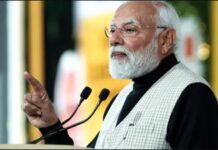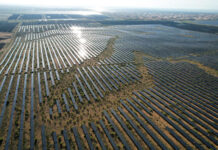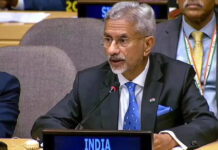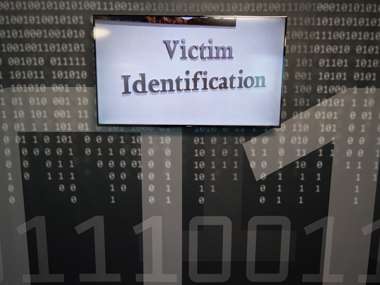June 23, 2017
Switzerland is hosting 48-member Nuclear Suppliers Group (NSG) in its capital Bern over next two days. Despite, India's persistent effort, its entry into the exclusive nuclear club does not seem a possibility during NSG plenary 2017. China has stated that it has not changed its stand on India's entry into the NSG.

June 23, 2017
Switzerland is hosting 48-member Nuclear Suppliers Group (NSG) in its capital Bern over next two days. Despite, India's persistent effort, its entry into the exclusive nuclear club does not seem a possibility during NSG plenary 2017. China has stated that it has not changed its stand on India's entry into the NSG.

China has been opposing India's entry to the club of nuclear nations saying that new members should sign the nuclear Non-Proliferation Treaty (NPT). India has not signed the NPT terming it discriminatory as it recognizes only those nations as nuclear weapon states who conducted nuclear explosive devices before 1967. India conducted first nuclear explosion in 1974 followed by another in 1998.
Of the 48 members of the NSG, 10 are said to be 'not convinced' with India's candidature for the group with China leading the way in raising opposition. India's attempts have ended in frustration particularly after it signed a nuclear pact with the US.
But, China's opposition could be an opportunity for India to look beyond nuclear power. There is overwhelming evidence to show that the advanced countries and world leaders are moving away from nuclear energy.
They seem to have reached the conclusion that nuclear energy is not the solution to energy crisis in a sustainable way. The focus, now, is on renewable energy.
EXAMPLE OF NSG HOST SWITZERLAND
Ahead of the NSG plenary 2017, the host Switzerland saw a massive change in favour of alternate energy sources. On May 21, the Swiss public was asked to vote on the question of energy sources. Over 58 per cent voters backed energy overhaul in the country. They voted for moving away from nuclear energy.
The new energy policy of Switzerland will be rolled out from January next year. According to the Energy Strategy 2050 initiative, the government will try to bring about a four-fold increase in solar, wind, biomass and geothermal energy output by 2035. Under the plan, Switzerland will shut down its five nuclear plants in phased manner.
The first nuclear power plant of Switzerland will be shut down in 2019. However, the alternate energy sources are likely to cost more, still the Swiss people voted against nuclear energy.
According to Swiss government estimates, it would have to share the burden of subsidies in the tune of USD 490 million per year while per household cost may go up by USD 41 annually.

Which countries are allies and which are enemies?
WHAT ABOUT OTHER DEVELOPED NATIONS
Switzerland, interestingly, is not the only nation making shift from nuclear to renewable energy resources. According to a World Economic Forum report, Denmark is moving to 100 per cent renewable electricity by 2035. Germany is planning to supply its 80 per cent power using renewable energy resources by 2050.
Two German provinces have already transformed into a 100 per cent net renewable energy powered zones. Australia is following the suit. About 40 per cent of southern Australia is powered by renewable energy. In fact, no major nation using substantial nuclear energy has announced a new nuclear power reactor in past several years.
Going by the records, a World Economic Forum report says that global annual nuclear energy generation peaked in 2006. However, the percentage contribution of nuclear energy to global electricity generation was recorded highest in 1993 at 17 per cent.
Now, it is at around 10 per cent. Except China, India, Russia and South Korea, no major technology and economy power of the world is making great progress in the field of nuclear energy. Portugal recently experimented by living on renewable energy for four full days to get an idea of how it would be turn total green.
WHY THIS SHIFT?
Experts believe that benefits from nuclear energy far outweigh the dangers that it poses to population. Chernobyl disaster of 1986 was the first major warning to the world which exposed the dangers of using nuclear energy. More than 55 people were killed in the incident while it was estimated that the radiation could have killed any number of people between 4,000 and 93,000 (according to estimates by different expert groups) by causing cancer.
If Chernobyl was the wake-up call, the Fukushima nuclear accident in Japan was the last nail in the coffin of nuclear energy. It convinced the world leaders that nuclear energy is no solution to the energy crisis. Until the 2011 incident in Japan, nuclear energy was considered as the low-carbon future of the world.
But, the incident changed the perception forever. Germany vowed to phase out nuclear power by 2022. It has already closed eight of 17 nuclear reactors permanently. Spain put a ban on construction of new reactors while Italy voted to remain non-nuclear. Countries like Australia, Austria, Denmark, Ireland, New Zealand and Norway have been staunch opponents of nuclear energy.
Further nuclear experts have pointed out that high grade nuclear fuel may not last for more than a few decades forcing the major energy consumers to rethink their strategy. Besides, there is another problem.
High-level nuclear wastes require careful storage. Experts say that high-grade nuclear wastes should be safeguarded for about 1 lakh years or may be even more to make sure that the radiations emanating from them do not harm humans and other living beings. This is too much a cost to bear for a risky energy resource.
THE CHINA WAY
China too seems to have understood that nuclear energy is not safe future option to meet energy requirements. In fact, China is currently the leading green energy producer and consumer in the world. According to Renewables 2016 Global Status report, the world produced about 785 gigawatts green energy.
China's share was 199 gigwatts followed by the US at 122, Germany at 92 and Japan with gigawatts. India stood at fifth position with 36 gigawatts green energy. China is also the leading wind and solar energy producer in the world. China is also the biggest investor in green energy projects.
From about USD3 billion in 2005, it has increased its green energy investment to USD100 billion in 2015. This figure seems humongous considering that the global investment in green energy projects for 2015 stood at USD285 billion. These are enough indications for India to think beyond nuclear energy and NSG membership, which China seems vowed to oppose.
Courtesy: India Today
















































































































